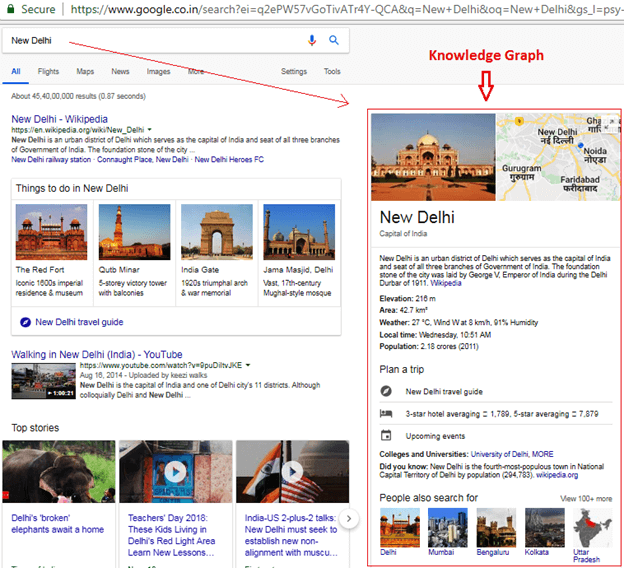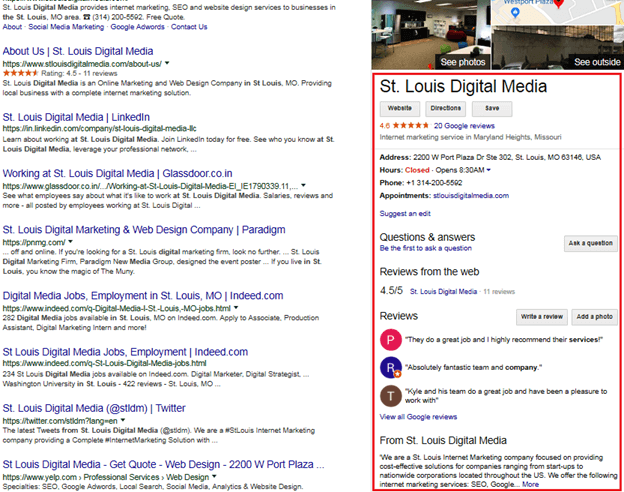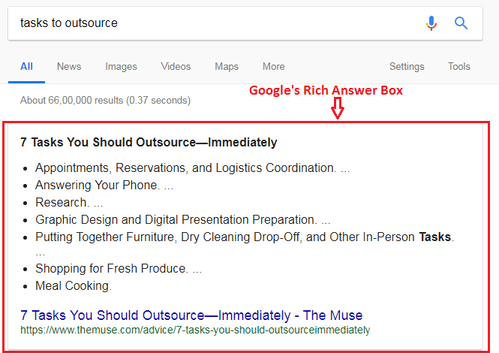Interview :: SEO
Robot Meta tag is used to give instructions to the web spiders. It tells the search engine how to treat the content of a page. It is a piece of code which is incorporated in the "head" section of a webpage.
Some of the main robots Meta tag values or parameters are as follows:
- FOLLOW: This tag instructs the crawler to follow the links on the page.
- NOFOLLOW: This tag instructs the crawler not to follow the links on the page.
- INDEX: This tag instructs the crawler to index the page.
- NOINDEX: This tag is used to instruct the search engine crawler not to index the page.
The syntax of a Robots Meta tag is very simple:
In the syntax, you can add different values or parameters of robots meta tags as a placeholder as we have written: "instructions for the crawler" as a placeholder. Some commonly used values of robots meta tags include an index, follow, noindex, nofollow and more.
Google Knowledge graph refers to a block of information that appears on the right side of the SERPs after entering a search query. It is launched by Google in 2012 and is also known as Knowledge Graph Card.

It provides information systematically using images, content, graphs, etc. It creates interconnected search results to makes information more appealing, accurate, structured and relevant. So, it is an enhancement of the organic Google search results as it understands the facts about, people, places, objects, etc.
Google Sandbox is an imaginary area which contains new and less authoritative sites for a specified period until they cannot be displayed in the search results. It is an alleged filter for the new websites. In simple words, we can say that it places new websites on probation and ranks them lower than expected in searches. It may be caused by building too many links within a short period of time.
Any type of website can be placed in a sandbox. However, the new websites who want to rank for highly competitive keyword phrases are more prone to the sandbox. There is no fixed duration for a site to stay in the sandbox. Generally, a website can stay in the Sandbox for one to six months. The logic behind the sandbox is that new websites may be not as relevant as older sites.
Google My Business is a free tool of Google which is designed to help you create and manage their business listings on SERPs, i.e., to manage your online presence on Google. Using this tool, you can easily create and update your business listings such as you can:
- Update business name, address and hours
- Upload your business's images
- Manage and reply to customer reviews
- Get custom insights like how customers are responding to your business online
- Get notifications when customers talk about your business
- Can manage multiple locations from one dashboard
- Can invite others to manage your business listings

An SEO audit refers to a process that evaluates the search engine friendliness of a website. It grades a site for its ability to appear in SERPs, i.e., it is like a report card for your site's SEO.
It helps you find issues with your site. You can resolve these issues to boost the ranking of your page or increase your sale. Furthermore, by doing SEO audit, you can do the following
Some SEO audit tools:
- Woornak
- SEOptimer
- Raven Tools
- Website Grader
AMP, which stands for Accelerated Mobile Pages, is an open source project that helps publishers to improve the speed and readability of their pages on mobile devices. It makes mobile pages easily readable and loading quicker for better user experience. This project was introduced jointly by Google, WordPress, Adobe and some other companies in 2015.
Google's rich Answer box is a short, rich featured snippet of relevant information that appears in the form of a box at the top of the SERPs. Google introduced this feature in 2015 to provide quick and easy answers to queries of users by featuring a snippet of information in a box at the top of the search engine result page. The rich answers may appear in different forms such as recipes, stock graphs, sports scores, etc. See the image given below:

There are plenty of ways to optimize your content or site for Google's rich answer box. Some of the commonly used methods are as follows:
- Identify complex queries and questions: The answers to simple questions are available in abundance across the SERPs. So, find out complex queries related to your niche by using keywords tools such as Google AdWords, SEMRush and Wordstream and write content that specifically answers these questions.
- Engage readers: Your one answer should be suitable for all similar questions. Furthermore, customize your content to suit beginners in your field and use graphs, tables, and step-by-step answer formats to engage the readers.
- Provide Supplemental Information: The users tend to read or follow related questions, so you can answers some similar questions down the page as supplemental information.
- Enhance User Experience: Keep your website well structured and formatted and optimized for mobiles to improve your users' website experience.
- Select User Searched Topics: Choose topics that are highly searched by users then accordingly provide information about these topics.
- Create Quality Content: Do market research to understand your audience and make a list of questions mostly asked by them and then accordingly create unique and quality content.
- Implement Schema Markup Code: This code allows Google to identify semantic contents in the source code of your site so that it could separate information from your page and use it in the Answer Box.
Schema markup, which is also known as structured data, is a code or microdata that you incorporate in your web pages to enable search engine better understand your pages and provide more relevant results to users. It helps search engines interpret and categorize information, which you want to highlight and to be presented as a rich snippet by the search engine.

The schema does not affect the crawling. It just changes the way the information is displayed and assigns a meaning to the content. So, it tells the search engine what your data means rather than just telling what it says.
